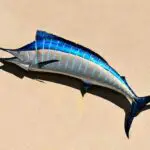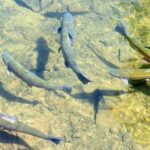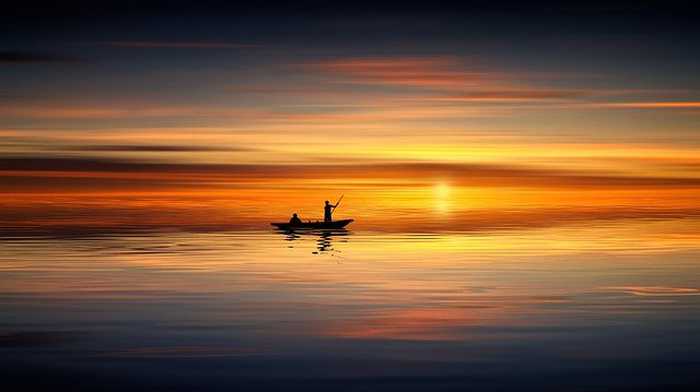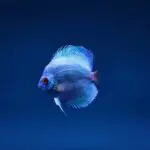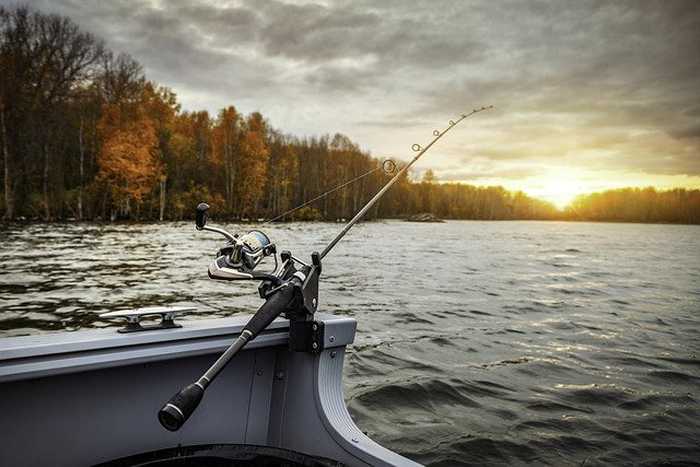Yes, crappie do bite in the fall! In fact, fall is one of the best times to fish for crappie in the Northeast. As the water begins to cool, crappie are on the move and feeding hard. This can make for some excellent fishing, especially if you’re targeting big crappie.
1. What causes crappie to bite in the fall?
The wind is your friend in the fall because it creates a chain reaction of stirring up microorganisms that baitfish feed on and crappie are then drawn in to gorge on the baitfish. Look for any windblown spots to find the largest concentrations of active crappie.
Crappie are generally considered a schooling fish, which means they live and travel in groups. In the fall, as water temperatures cool, these schools begin to break up and crappie becomes more spread out. This can actually make them harder to catch since they’re not concentrated in one area. However, the good news is that the wind can help you find them.
Windy conditions stir up microscopic organisms in the water that baitfish feed on. When these baitfish are drawn to an area, the larger predators like crappie will follow close behind looking for an easy meal.
2. How do you know when crappie are biting in the fall?
As the weather cools off in the fall, many anglers believe that the fish will become less active and harder to catch. However, this is not necessarily true for all fish. In fact, crappie can actually be quite active during this time of year, making them a great target for fishing. So how do you know when crappie are biting in the fall?
One of the best indicators of whether or not crappie are biting is to look for windblown spots on the lake. These areas tend to have larger concentrations of actively feeding fish, so they are worth checking out if you’re hoping to catch some Crappie. Additionally, Veteran anglers know that even though a lake may be turning over (a process where deep water becomes warmer and rises to the surface), fish will still bite during this time. So if you see signs that a lake is turnovering (e.g.
3. What types of bait work best for catching crappie in the fall?
When it comes to bait for catching crappie in the fall, there are a few options that seem to work best. One option is using minnows, either live or artificial. Another good option is using jigs, both with or without minnows. And finally, using crankbaits can also be effective.
So, what makes these baits so effective in the fall? Let’s take a closer look at each one.
Starting with minnows, they are a great choice because crappie love to eat them and they are easy to find this time of year. If you’re using live minnows, make sure to keep them fresh by keeping them in a aerated livewell on your boat. As for artificial minnows, there are many different types and colors available on the market, so experiment until you find something that works well in your area.
Jigs are also popular among crappie fisherman because they can be fished in many different ways and offer a lot of versatility. Jigs can be fished slow or fast, deep or shallow. basically anywhere where crappie might be hiding out!
If you’re going to use jigs with minnows as bait, just thread the minnow onto the hook like you would any other type of baitfish. Otherwise, if you’re just using an unweighted jighead alone, simply cast it out and reel it back in slowly while stopping occasionally to let it sink down into holes or near cover where fish might be holding tight.
Last but not least we have crankbaits which are another excellent choice when fishing for fall crappies.
4. Where do you find big schools of crappie in the fall?
In the fall, crappie can be found in large schools near deep water structure. They will often suspend around submerged trees or brush piles in 20 to 30 feet of water. As the water temperature begins to cool, crappie will move into shallower water to feed on baitfish. During this time of year, they can be caught near docks and other shallow cover using minnows or jigs.
5. How do you fish for big slabs in the fall?
In the fall, when the water temperatures start to cool off, big slabs (also called lunker bass) become more active and start feeding heavily in preparation for winter. This makes fall a great time to fish for big slabs! There are a few things you can do to increase your chances of landing a lunker bass this fall:
1. Use large, baitfish-style lures. Big slabs love to eat baitfish, so lure selection is key. Stick with larger baits that mimic the size and shape of common prey species like shad or bluegill.
2. Fish deep waters. As the water temperatures cool off in the fall, big slabs will often move into deeper waters where it is cooler and they can find an abundance of food. Pay attention to depth changes and structure in the lake or river you’re fishing, and target areas where big slabs are likely to hold up.
3. Slow down your presentation. In the fall, big slabs are less inclined to chase after fast-moving prey items – they would much rather ambush their meals from cover or wait patiently for something slow-moving and easy to catch. Slowing down your presentation will increase your chances of getting a bite from a lazy slab hiding out in some weeds or under a log.
6. Can you still catch Crappie during cold fronts in the fall?
Yes, you can still catch Crappie during cold fronts in the fall. In fact, the cooler weather can actually trigger a good crappie bite. As waters cool down during the fall, crappie will school up big time and put the feed on before winter arrives. So if you’re willing to brave the colder temperatures, you can definitely still get your hands on some Crappies.
7. How does weather affect Crappie fishing in the Fall months?
As the weather begins to cool down in the fall months, Crappie fishing can be affected in a few different ways. The most obvious way is that the fish will become less active as the water temperature drops. This means that they will be less likely to bite, and anglers may have to slow down their presentation or change tactics altogether.
Another way that weather can affect Crappie fishing is through wind and wave action. If the wind picks up and creates waves on the surface of the water, it can make it difficult for anglers to see and target fish. Additionally, strong winds can make it difficult to cast accurately, making it hard to get your lure in front of fish.
Finally, precipitation (rain or snow) can also impact Crappie fishing. If there is light rain or snow falling into the water, it can create a “glaze” over the surface which again makes it harder for anglers to see fish below. Heavy rains or snows can also muddy up waterways and make fishing very difficult (or even impossible) until conditions improve.
8. What time of day is best for catching Crappie during Fall days?
Fall days are typically very good for catching crappie. The fish have pretty good color and depth perceptive visual abilities, which allow them to see better in reduced-light situations than many of their prey items. Focus your fishing efforts on dawn until about 2 hours after sunrise.
9. Does moon phase have any impact on Crappies feeding habits during Fall season?
The moon phase has a big impact on the feeding habits of crappies during fall season. The full moon is when they are most active and feed the most. The new moon is when they are least active and don’t feed as much. This is because during the full moon, there is more light available for them to see their food and hunt it down. During the new moon, there isn’t as much light available, so they aren’t able to see their food as well and don’t hunt it down as much.
10 Tips & Tricks for success while all Crappie Fishing
Crappie fishing is a popular pastime for many anglers. The fall season is a great time to go crappie fishing, as the fish are actively feeding in preparation for winter. Here are 10 tips and tricks to help you have success while crappie fishing this fall:
1. Look for areas with deep water and plenty of cover. Crappie tend to congregate in deep, sheltered waters during the fall months. Look for areas with thick vegetation or submerged logs and brush piles where the fish can hide from predators and find food.
2. Use live baitfish or minnows when possible. Crappie are opportunistic feeders and will readily take baitfish that are swimming by. Minnows also tend to stay alive longer on hooks than other types of bait, so they’re a good choice if you’re planning on fishing for a while.
3. Try different types of lures until you find what works best in your area. In general, brightly-colored lures work well in clear water, while darker colors are more effective in murky conditions. Spinning lures and jigs tipped with minnows are both good choices for catching crappie.
4. Fish during the daytime hours when visibility is better. This will help you see strikes more easily so you can set the hook before the fish gets away.
5 Feeding activity usually peaks around dawn and dusk, so these times can be productive as well.
6 Set out several lines at different depths until you locate where the fish are suspended in the water column.
7 A depth finder can be helpful in locating schools of fish.
8 Keep moving until you find an area that produces bites.

